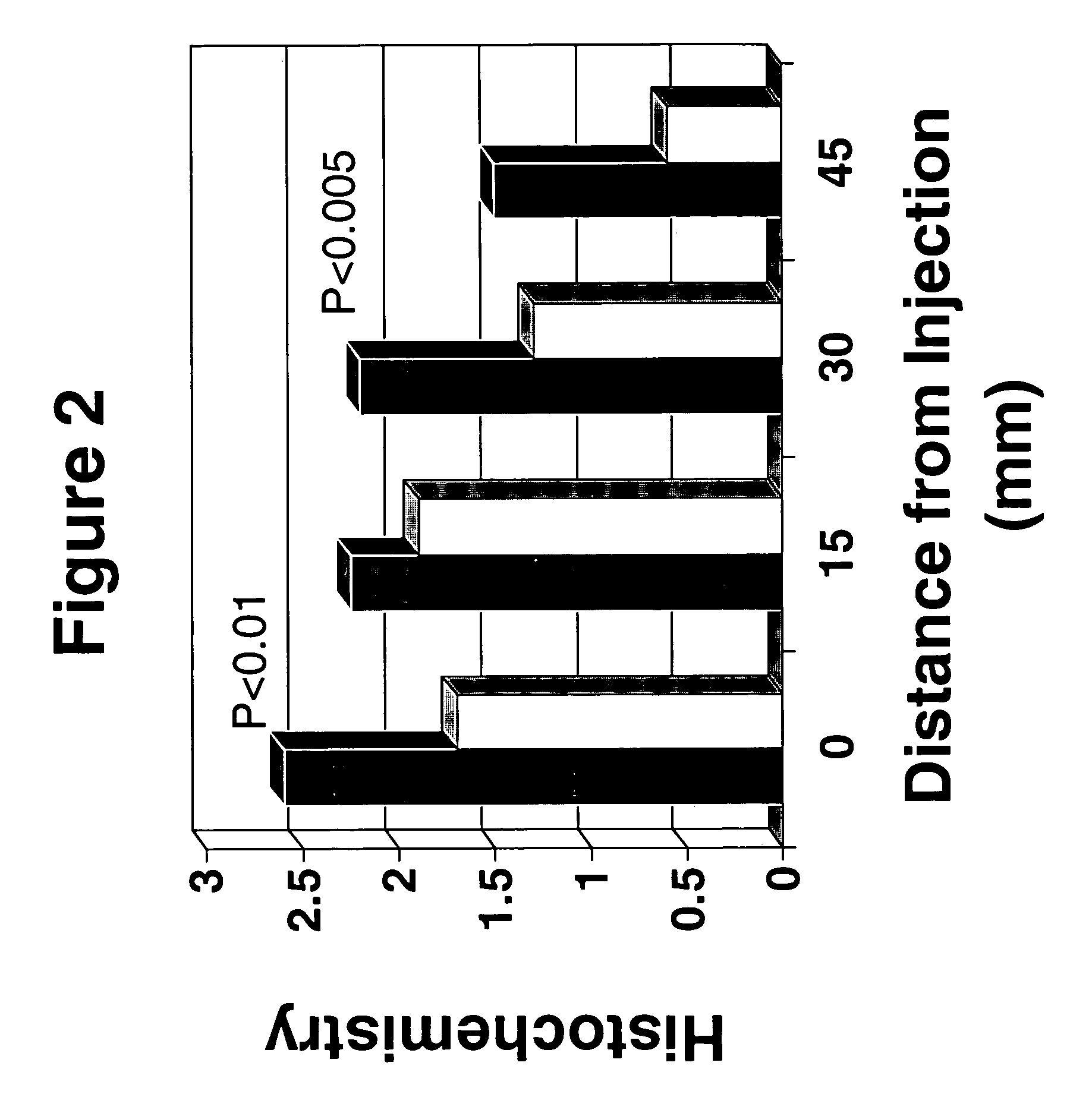High-potency botulinum toxin formulations
a technology of botulinum neurotoxin and formulation, which is applied in the field of high-potency botulinum neurotoxin formulation, can solve the problems of abandonment of i>botulinum /i>therapy, loss of biologic activity and pharmaceutical properties at high dilution, and obliteration of therapeutic effectiveness, so as to reduce the adverse effects of botulinum-based pharmaceuticals, increase sequestration of botulinum toxin, and limit the adverse effects of bo
- Summary
- Abstract
- Description
- Claims
- Application Information
AI Technical Summary
Benefits of technology
Problems solved by technology
Method used
Image
Examples
example 1
Treatment of Blepharospasm
[0186]The subject is a 52-year-old female with severe bilateral involuntary blepharospasm. Involuntary movements have prevented her from driving and maintaining gainful employment. BOTOX® was administered by injection on five separate occasions without producing any significant clinical improvement. Surgery was performed to remove a portion of the protractors of eyelid closure (orbicularis oculii). No lasting improvement was observed.
[0187]The albumin content of the BOTOX® was altered by adding 5,000 μg human serum albumin to a vial of BOTOX® (100 LD50 units). The resulting composition has an albumin concentration of 2,750 μg / cc (0.018 LD50 / μg albumin). Administration of 60 LD50 units of the high-albumin preparation produced a nearly complete resolution of symptoms. The high-albumin concentration was clinically effective even when used in subsequent administrations (4 injection cycles) for over two years.
example 2
Treatment of Hemifacial Spasm
[0188]The subject is a 62-year-old male with a history of bilateral hemifacial spasm. Botulinum-toxin therapy using BOTOX® had been ineffective. The spasms impaired his day to day ability to function. Decompression of a facial nerve was attempted surgically on two separate occasions. Both surgeries proved ineffective in attaining acceptable relief of involuntary facial spasms and produced deafness in one ear.
[0189]The albumin content of the BOTOX® was increased by adding human serum albumin sufficient to achieve a concentration of 5,250 μg / cc (0.00952 LD50 / μg albumin). Administration of 30 LD50 units of the high-albumin preparation proved highly effective and substantially relieved the clinical symptoms.
example 3
Treatment of Hemifacial Spasm
[0190]The subject is a 66-year-old man with right hemifacial spasm. Although he was successfully treated with BOTOX® for 11 years, resistance developed that rendered further injections ineffective. Immunologic-resistance testing, using a remote point injection, demonstrated an absence of circulating antibody. A trial of another botulinum toxin formulation, MYOBLOC®, was also ineffective at relieving signs and symptoms.
[0191]The albumin content of BOTOX® was increased by adding human serum albumin sufficient to achieve a concentration of 5,250 μg / cc (0.00952 LD50 / μg albumin). Administration of 40 LD50 units of the high-albumin preparation proved highly effective and substantially relieved the clinical symptoms.
PUM
| Property | Measurement | Unit |
|---|---|---|
| concentration | aaaaa | aaaaa |
| concentration | aaaaa | aaaaa |
| soft-tissue features | aaaaa | aaaaa |
Abstract
Description
Claims
Application Information
 Login to View More
Login to View More - R&D
- Intellectual Property
- Life Sciences
- Materials
- Tech Scout
- Unparalleled Data Quality
- Higher Quality Content
- 60% Fewer Hallucinations
Browse by: Latest US Patents, China's latest patents, Technical Efficacy Thesaurus, Application Domain, Technology Topic, Popular Technical Reports.
© 2025 PatSnap. All rights reserved.Legal|Privacy policy|Modern Slavery Act Transparency Statement|Sitemap|About US| Contact US: help@patsnap.com


